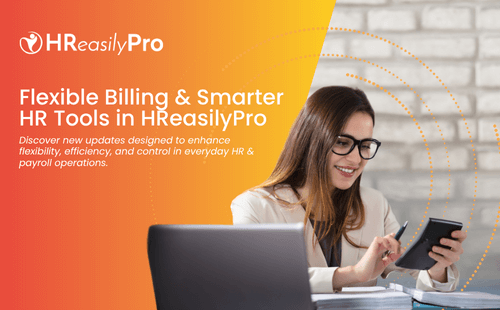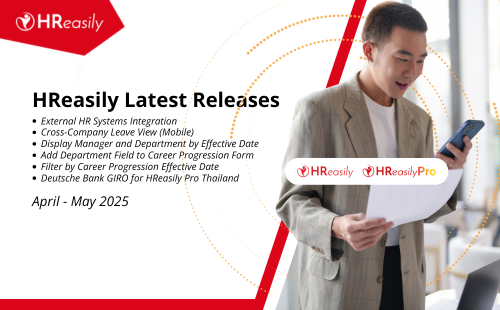
The holidays are a wonderful time with parties, rest, and fun moments with family and friends. But when the holidays end, getting back to work can be tough. It’s common for people to feel a bit less productive as they try to get used to their regular work schedule again.
But don’t worry, though! By planning carefully and keeping a positive attitude, you can get your energy back and begin the new year with a strong start. Let’s look at our five important steps to make it easier for you to switch from holiday mode to work mode:
1. Reflect and Set Clear Goals
Before immersing yourself in your work, it’s valuable to pause and reflect on the year that has passed. Take a moment to consider both your professional and personal achievements, as well as any challenges you may have faced. This reflection serves as a foundation for setting clear goals for the months ahead.
When establishing these goals, it’s crucial to identify a mix of short-term and long-term objectives. Short-term goals provide immediate direction and focus, while long-term goals contribute to a broader sense of purpose. This dual perspective helps you strike a balance between addressing immediate priorities and working towards larger aspirations.
Setting goals acts like a roadmap for your journey, offering a clear sense of direction. This roadmap becomes your guiding light, illuminating the path ahead and providing a framework for decision-making. Having a well-defined destination fuels your motivation, giving you a sense of purpose in your daily efforts.
To make these goals more manageable, consider breaking down larger objectives into smaller, actionable tasks. This not only makes the goals less overwhelming but also allows you to celebrate incremental successes along the way. The satisfaction of achieving smaller tasks serves as motivation, propelling you forward toward the accomplishment of more significant milestones.
In essence, taking the time to reflect and set clear goals is akin to plotting your course before embarking on a journey. It’s a proactive approach that enhances your clarity, motivation, and overall effectiveness as you transition from holiday mode to work mode.
2. Prioritise and Organise
Effectively prioritising and organising your tasks is a crucial factor in ensuring a smooth transition from holiday mode to work mode. To kickstart this process, begin by creating a to-do list that outlines the tasks you need to accomplish for the day or week. This simple yet powerful tool serves as a visual guide, helping you grasp the scope of your responsibilities.
The next step involves prioritising these tasks based on their urgency and importance. Recognizing which tasks demand immediate attention and which contribute significantly to your overall goals allows you to allocate your time and energy more efficiently. By tackling high-priority tasks first, you ensure that you’re making meaningful progress and addressing the most pressing issues.
Additionally, consider the physical environment in which you work. Organising your workspace is another key aspect of a successful transition. Minimise distractions by decluttering your desk and creating a tidy, well-organised space. A clutter-free environment not only reduces visual noise but also promotes a sense of order and focus. This, in turn, contributes to a conducive atmosphere for concentrated and efficient work.
A well-organised workspace can have a significant impact on your concentration and productivity. It allows you to locate necessary materials quickly, eliminates unnecessary stress caused by disorder, and enhances your overall ability to stay focused on the task at hand. The act of organising your physical space mirrors the mental clarity gained from prioritising tasks, creating a harmonious balance that sets the stage for a productive work routine post-holidays.
3. Gradual Return to Routine
Returning to a full workday after a relaxing holiday can feel like a sudden leap into a bustling routine. Instead of subjecting yourself to the shock of an immediate return to your pre-holiday schedule, adopting a gradual approach can make the transition smoother. Begin by easing into your regular work hours and responsibilities, acknowledging that an abrupt shift may lead to overwhelm.
In the initial days back at work, prioritise tasks that help you reconnect with your professional responsibilities. This might involve catching up on emails, communicating with colleagues, and staying informed about any recent developments within your team or organisation. By focusing on these initial, smaller tasks, you create a buffer that allows you to acclimate to the work demands without feeling inundated.
This gradual return strategy serves multiple purposes. Firstly, it acknowledges the need for an adjustment period, considering the mental shift from holiday relaxation to work mode. Secondly, it provides an opportunity to address immediate and essential tasks without the pressure of tackling larger projects right away. It’s a gentle reintroduction to the rhythm of work, allowing you to regain your bearings and find your stride before delving into more complex responsibilities.
By taking these initial steps, you not only manage your workload more effectively but also foster a sense of control and confidence as you navigate the post-holiday return. This approach recognizes the importance of balance and adaptation, ensuring that the transition from vacation mode to work mode is more gradual, manageable, and ultimately, successful.
4. Implement Time Management Techniques
Post-holiday productivity hinges on effective time management, and employing proven techniques can significantly enhance your efficiency. Consider incorporating strategies such as the Pomodoro Technique, time blocking, or the Eisenhower Matrix into your routine to optimise your use of time.
The Pomodoro Technique involves breaking your work into focused intervals, typically 25 minutes, followed by a short break. This structured approach helps maintain a high level of concentration during work sessions, preventing fatigue and promoting consistent progress. The timed intervals act as a gentle reminder to stay focused, enhancing both productivity and time awareness.
Time blocking involves allocating specific blocks of time to different tasks or types of work. By dedicating focused periods to particular activities, you can minimise multitasking and improve concentration. This method also allows for better planning, ensuring that each aspect of your workload receives dedicated attention.
The Eisenhower Matrix is a tool for prioritising tasks based on urgency and importance. By categorising tasks into quadrants, you can identify which ones require immediate attention and which can be deferred or delegated. This approach streamlines decision-making, preventing you from feeling overwhelmed by an extensive to-do list.
These time management techniques not only assist in staying focused on tasks but also contribute to preventing burnout. By consciously managing your time, you ensure that you maintain a healthy balance between work and breaks, preventing fatigue and sustaining your energy levels throughout the day.
Setting specific time slots for different types of work adds structure to your day, helping you navigate through various responsibilities without feeling scattered. Additionally, incorporating short breaks is vital to maintaining optimal energy and concentration levels. These breaks act as rejuvenating moments, allowing your mind to recharge and enhancing overall productivity.
In essence, effective time management techniques provide a framework for navigating post-holiday work demands. They offer a systematic approach to tasks, promoting focus, preventing burnout, and ultimately contributing to a more balanced and productive work routine.
5. Reconnect with Colleagues
Creating a positive and collaborative work environment is a cornerstone of sustained productivity. To foster this atmosphere, it’s crucial to take the time to reconnect with your colleagues on both personal and professional levels. This intentional engagement helps build strong interpersonal relationships and contributes to a more cohesive team dynamic.
Schedule catch-up meetings with your colleagues to discuss both work-related matters and personal experiences. Sharing stories about your holiday experiences not only helps you reconnect on a personal level but also creates a more inclusive and friendly work environment. This sharing of experiences can break down barriers, allowing for a deeper understanding and appreciation of each team member.
On a professional level, use these meetings to discuss team goals for the upcoming year. Collaboratively setting objectives and priorities aligns everyone towards a common purpose. This shared vision fosters a sense of unity and collective responsibility, enhancing the overall team spirit.
A supportive work community plays a crucial role in providing the encouragement and motivation needed to overcome any post-holiday blues. The positive interactions with colleagues create a sense of camaraderie and can serve as a powerful antidote to feelings of isolation or stress that might accompany the return to work.
In summary, taking the time to reconnect with colleagues, both personally and professionally, contributes to the development of a positive and collaborative work environment. This, in turn, not only enhances overall team morale but also provides the emotional support and motivation necessary for overcoming any challenges that may arise during the post-holiday transition.
——————-
Moving from vacation mode to work mode demands purposeful action and a positive outlook. Reflect on your goals, prioritise tasks, gradually re-enter your routine, utilise time management techniques, and re-establish connections with colleagues to breathe new life into your productivity after the holidays. Embrace the upcoming year with enthusiasm and determination, and witness how your reinvigorated focus drives success in both your personal and professional pursuits.
Hope this article will help you back on track. See you in the next article!
Ready to simplify your leave request process?
Take your HR management to the next level with HReasily. Try 30-day trial today!
If you need any help, we’re here for you. Email us at [email protected] .
Our dedicated team is excited to guide you through harnessing the full power of this integration, customised to suit your unique HR needs. Let us help you streamline your processes and drive efficiency in your HR operations.






